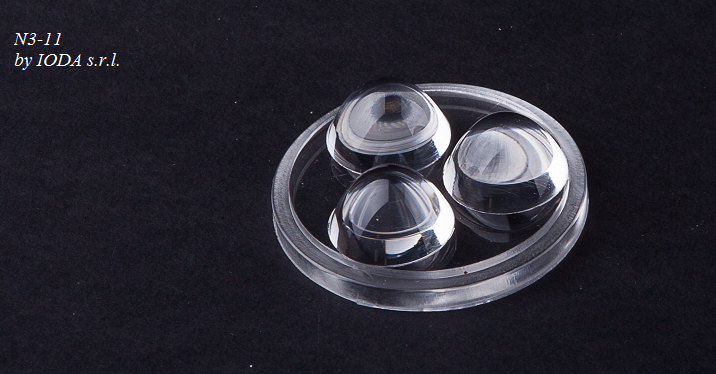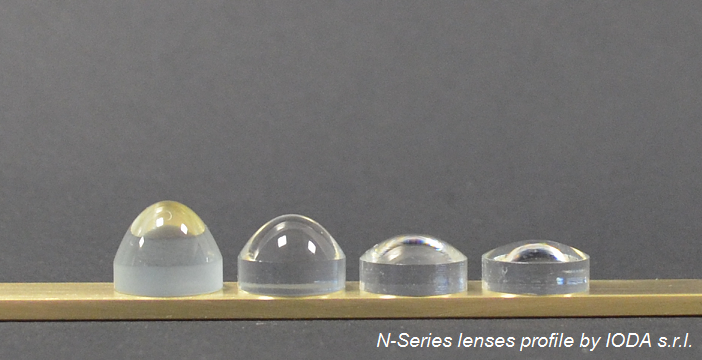
The efficiency of an optical system of illumination, or performance, is a dimensionless number with a value between 0 and 1, or, when multiplied by 100, is expressed in percentage.
The efficiency of an optical system is the ratio of light emitted by the source (incoming light) and the light emitted from the optical system itself (light output).
Lighting traditional optics:
The orientation of the light through a traditional optical occurs in three phases;
– The primary optic lens is mounted directly on the LED chip with protection function of the chip itself.
– The secondary optics, placed around the LED, reflects the emitted light, the angle of opening of the parabola, and the height of the same “close” the light in a desired emission angle.
– The tertiary optics is placed at the top of the parabola, works for refraction with the task of collimating and homogenize the light emitted.
Optics developed by IODA:
The orientation of the light takes place in two phases:
– The primary optic is the lens mounted on the LED chip.
– The secondary optic is constituted by a plano convex lens crossed by the light, the Opening Bid Meets angle is given by the geometry and the material of the lens itself, the principle used is the refractive index.
The particular geometry of the lenses N-series has been developed in collaboration with the University of Padua, Department of Physics and Astronomy.

N-Series Lenses profile
Both reflection and refraction have their own coefficients of performance.


 Italiano
Italiano